Final Symposium on JTC “Mental Disorders” in Lisbon/Portugal, January 13th & 14th 2014
On January 13th and 14, 2014 ERA NET NEURON held its 33 meeting in Lisbon, Portugal. The meeting was hosted by the NEURON Portuguese FCT partner. Key element of the meeting was the final symposium of the 11 projects funded under the JTC 2010 ‘European Research Projects on Mental Disorders’.
In January 2010, ERA-Net NEURON launched a JTC for proposals focused on Mental Disorders. The aim of the call was to enable multi-national collaborative research projects addressing major issues relating to mental disorders. Proposals received in response to the Call covered a wide spectrum of issues: from understanding basic mechanisms of mental disorders to proof-of-concept clinical studies in man. Among those were research projects on depression and bipolar disorders, schizophrenia and psychotic disorders, phobia and anxiety disorders, substance use disorders, autism and mental retardation and other mental disorders. 11 applications were approved for funding with a total volume of about 10 million €. After the three years funding and run time project leaders or participants presented an indeed vast amount of results.
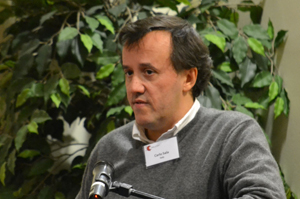
AMRePACELL project: Mental retardation (MR) and autism disorder (AD)
Carlo Sala from the National Neurological Institute Carlo Besta (Italy) coordinated the AMRePACELL project that focused on mental retardation (MR) and autism disorder (AD). The consortium used a new technology based on the genetic reprogramming of human skin cells from patients carrying a mutation in MR and AD genes to derive cells that are pluripotent (iPS). The multitude of analyses of such cells like morphological, biochemical and functional assessment and gene expression profiles aimed to explore the possibility to use such cells as possible cell therapy.

EUHFAUTISM consortium : Autism spectrum disorders
Autism spectrum disorders and specifically the subgroup of high-functioning ASD (HF-ASD) patients was the focus of the EUHFAUTISM consortium. Thomas Bourgeron from the Institute Pasteur (France) presented the European network and results. Besides definition of a common standardized assessment of the patients whole genome genotyping and gene sequencing was used to identify the major risk factors for HF-ASD. This served both, advanced knowledge of the mechanisms leading to ASD, and thus second the development of precise diagnostic and therapeutic strategies.
AUSZ_EUCan consortium: Schizophrenia (SCZ) and autistic spectrum disorders (ASD)
Schizophrenia (SCZ) and autistic spectrum disorders (ASD) share symptomatology and neurocognitive conditions. In an integrative approach combining comprehensive cognitive assessments, high-resolution genetics and brain imaging the AUSZ_EUCan consortium aimed to improve the identification of the biological basis of ASD and schizophrenia. As Marie-Odile Krebs from the INSERM Université Paris Descartes (France) summarized it: “We can improve therapeutic interventions in mental and cognitive disorders.”
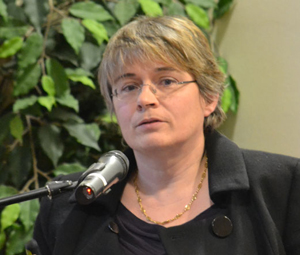
DBS_F20rat: Schizophrenia
Christine Winter from the Technical University Dresden (Germany) and her DBS_F20rat consortium focused on schizophrenia. Schizophrenia is characterized by profound disruptions in cognition and emotion. Despite pharmaco-therapeutic progresses, a considerable percentage of patients has no or only partial response to treatment. The project explored deep brain stimulation (DBS) as a novel focal and causative strategy in the treatment of therapy-resistant schizophrenia.
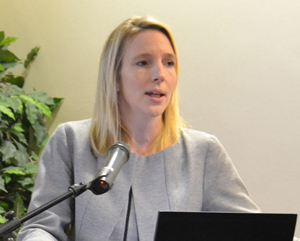
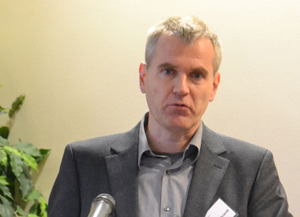
Project NeuConnect: New treatment strategies for schizophrenic patients
New treatment strategies for schizophrenic patients were also the main goal of Herbert Hildebrandt from the Hannover Medical School (Germany). Recent research suggested a disturbed brain development and maturation as causative for schizophrenia. The project NeuConnect explored thus novel strategies for the treatment of schizophrenia based on genetic variation of the relevant molecule neural cell adhesion molecule (NCAM).

PADRE consortium: Antidepressant drug response
Andrzej Pilc from the Polish Academy of Science in Krakow (Poland) presented the PADRE consortium addressed the questions of tools for selecting the most appropriate antidepressant drug for the individual patient in the treatment of major depression. They set out to identify biomarkers of drug response that could be transformed to a pharmacogenetic diagnostic test. The tool was investigated and validated in large cohorts of patients that were characterized for antidepressant drug response.
SuppHab consortium: Depression treatment resistance
The SuppHab consortium around Alexander Sartorius from the Central Institute of Mental Health (Germany) also addressed treatment resistant depression. Recently, deep brain stimulation (DBS) was tested as a new therapeutic approach for these severely ill patients. The project tested the clinical therapeutic benefits of DBS of the lateral habenula (LHb). This little brain structure has recently been associated with stress responses, reward and emotional processing.
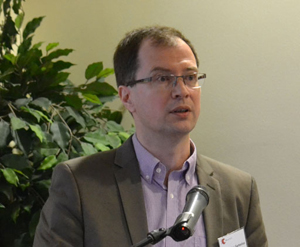
POSEIDON project: Epigenetic impact on depression
Exposure to early life stress (ELS) has been associated with a prospectively increased risk for depression. Recent research suggested that epigenetic regulation of gene expression may mediate this effect. The POSEIDON project investigated thus epigenetic impact on depression. As Michael Deuschle from the Central Institute of Mental Health (Germany) enthused “Results contribute to identifying DNA methylation signatures that could serve as predictive and diagnostic markers and also as guidance for prevention and intervention of psychiatric disorders”.


Project STNDBS-ICD: Impulse Control Disorders (ICD)
Impulse Control Disorders (ICD) that are also termed “behavioural addictions” include e.g. drug addiction, pathological gambling or shopping. The project STNDBS-ICD of Christelle Baunez from the National Center for Scientific Research (France) investigated the effects of subthalamic nucleus deep brain stimulation (DBS) for the treatment of such disorders.

NICO-GENE project: nicotine addiction
Uwe Maskos from the Institute Pasteur (France) reported results of the NICO-GENE project that centered on nicotine addiction. Nicotine is the major, if not sole, compound responsible for driving the strong addiction to smoking and the actions of nicotine are mediated by nicotinic acetylcholine (ACh) receptors (nAChRs). The consortium investigated the contribution of different nAChR genetic elements to nicotine addiction.
TRANSALC project: Neuroimaging analyses for alcoholism
The TRANSALC project pursued neuroimaging analyses in to reveal alcoholism-specific connectivity maps and to gain knowledge about their modification upon challenge. As Wolfgang Sommer from the Central Institute for Mental Health (Germany) summarized “Based on this information, we expect to better predict the effects of experimental drugs proposed for treatment of alcoholism in human patients”.
